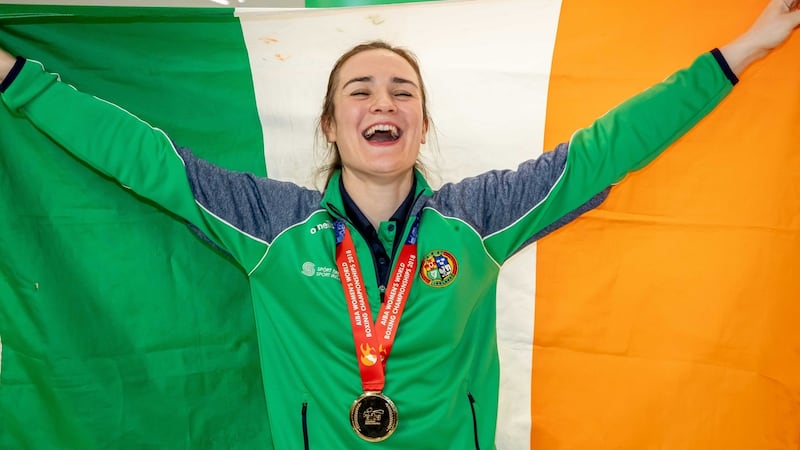The moment was two years in the making. A calculation made. An investment lodged. A slow and steady climb and as these things often are, a promise made to herself.
Along that pathway, which took Kellie Harrington to New Delhi this year, she became the amateur boxing lightweight world champion.
Women’s boxing is like that. Women’s sport is like that. To turn heads and become noticed as something, to rise above the din of traditional men’s sport where weekly accomplishments are lionised, you need to become exceptional.
The clearing of a ruck or a curving free kick from 30 metres is rarely enough unless it is an Irish prop or Premiership footballer. Women like Harrington need to beat the world.
For her the decision to do that came long before a traumatised Katie Taylor stepped from the ring in Rio and soon after declared she was turning professional.
Taylor vacated the 60kg Olympic weight category and Harrington, determined to win an Olympic medal as Taylor had done in London 2012, jumped into the void.
Her opportunity came and passed two years previously at the World Championships in Astana, where a silver medal at light welterweight was as much as she could manage.
Become a fighter
A lifetime’s achievement for some. But not Harrington. New Delhi was where Taylor had kicked off her run of five World Championship wins in 2006. Like Taylor, Harrington had become a fighter of many parts.
And it was that aspect of her game that allowed her defeat Thailand’s Sudaporn Seesondee on a 3-2 split decision and continue a tradition that has seen the world belt fall out of Irish hands just once in 12 years.

In essence, the high point was the achievement, the success of abandoning welterweight for lightweight, the developing of a universal style that against Seesondee moved between orthodox and southpaw. Switch hitting and forcing her opponent to constantly readjust and denying her a rhythm won the gold medal for Harrington.
A more set boxer, the Thai wanted to trade punches, her big back hand at times swinging wildly in the hope of catching the attention of the judges and the ever swaying Irish fighter.
Sharp raids
Harrington’s poise and movement, her sharp raids to score against her opponent and her elusive movement to avoid heavy contact are all parts of the jigsaw that has made her what she now is.
Zaur Antia, the ursine Georgian from Bray, who has been behind many of the Irish successes in recent years, was in her corner serving up the tactics and the technical intelligence. The high point was it all coming together, the many strands making Harrington’s a universal style one the rest of the world must now figure out how to beat.
Low point
Novak Djokovic (31), Rafa Nadal (32) and Roger Federer (37) collected this year's four Grand Slam titles. Where are the new faces punching through. Of the last 36 Grand Slams those three players have won 30, the other six won by Andy Murray (31), Stan Wawrinka (33) and Marin Cilic (30).















